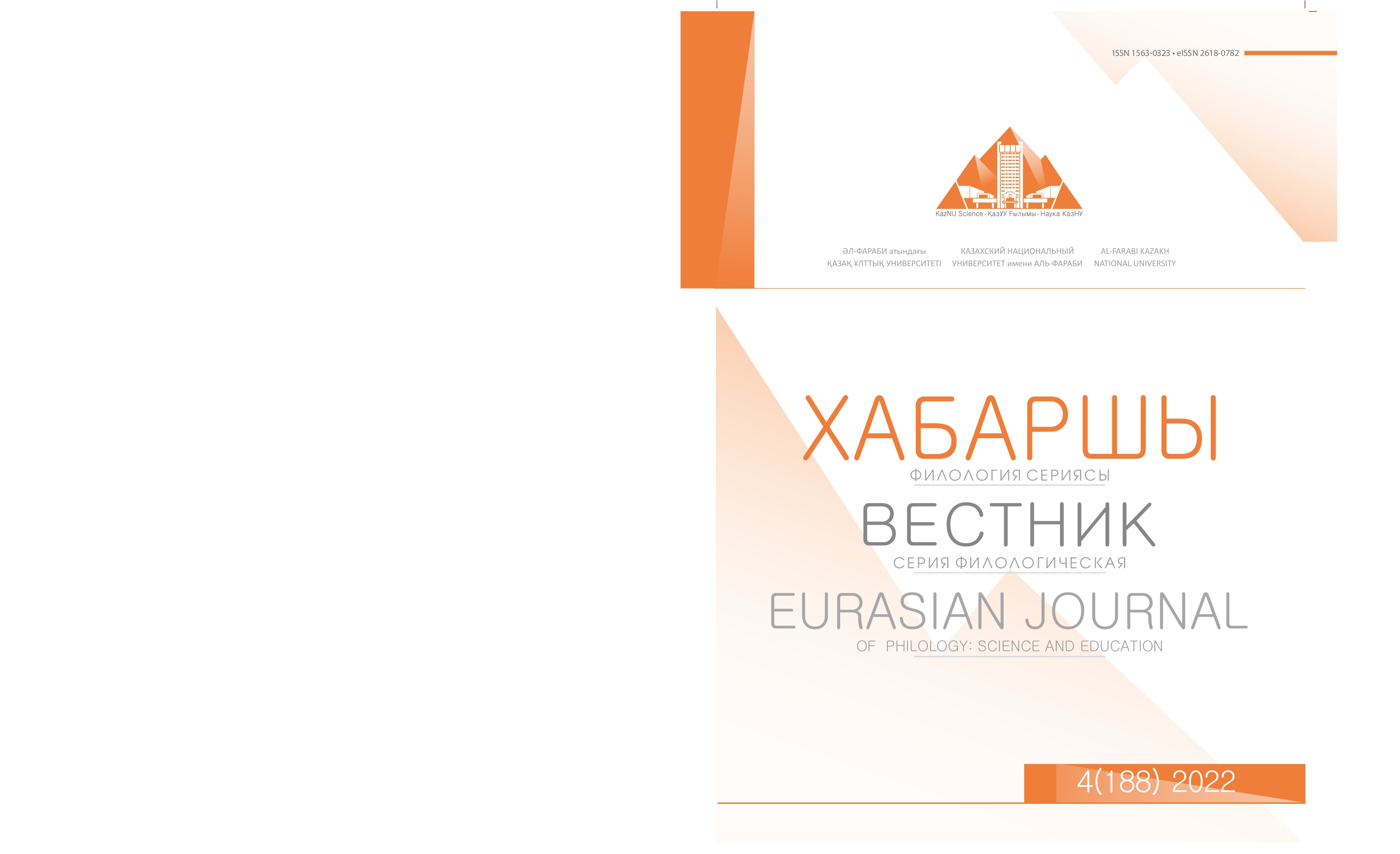Cognitive model of anthropomorphous metaphor
DOI:
https://doi.org/10.26577/EJPh.2022.v188.i4.02Abstract
This article discusses the theoretical concept and function of the terms metaphors and anthropomorphic metaphors. The nature of the metaphor and its artistic and figurative existence were determined. The author conducted a comprehensive study on the theory of conceptual metaphor, based on scientific research in the field of a number of sciences devoted to the existence and essence of metaphor. Many scientific studies devoted to the identification of various variants of various metaphors in modern linguistics are shown.
The features inherent in the anthropometric principle in the nomination and modeling of the surrounding world are analyzed. The place of metaphor as a means of thinking and association in scientific research is formulated. The meaning of an anthropomorphic metaphor in which objects and phenomena of objective reality are in associative connection with the forms and properties of a person is determined. As a result of the analysis, it is shown that the physiological properties of a person, somatic symptoms, mental properties are grouped in the anthropomorphic metaphor. The novelty of the study shows that until now there has not been a detailed classification of anthropomorphic features of the cultural concept. The study shows that when naming or describing the environment, natural objects through an anthropomorphic metaphor, the worldview of the people is represented through language. A person forms a picture of the external world, creates its concept, and it is represented in the language through anthropomorphic metaphors.






